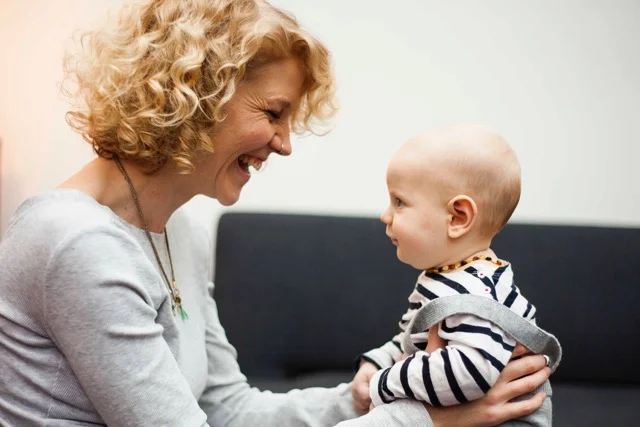For a number of years Midwives - and other healthcare professionals - have been advising women NOT to share beds with their babies, as a point of best practice. But many women continue to ‘bed-share’ all the same…So what is this secret world of Bed-sharing all about? And why are mums choosing to ignore the advice of the ‘experts?’
Why midwives say no
“For many years, the Department of Health has advised that the safest way for a baby to sleep is on its back, in its own cot or moses basket in the parents’ room for the first 6 months” Professor Mark Baker, Director of the NICE Centre for Clinical Practice
Midwives base their practice on the most up-to-date, ‘best available’ evidence, which is what informs NICE Guidelines and Department of Health guidelines. So any Midwife who is commenting on safe sleeping will be singing from this hymn-sheet, as it were.
It is a Midwive’s professional obligation to provide you with this information. However, what you chose to do with this information is ultimately your choice.
So what’s the evidence?
The Information and advice on co-sleeping largely relates to its association with sudden infant death syndrome (SIDS) – where babies die suddenly and seemingly inexplicably. However, the exact causes of SIDS are unknown.
The most recent NICE guidelines on SIDS and co-sleeping was updated in 2014. The evidence reviewed for this guideline showed that there was a statistical *relationship* between SIDS and co-sleeping, but there was no clear evidence to say that co-sleeping directly causes SIDS.
Consequently, since we have some evidence to suggest that there *may* be a relationship between co-sleeping and SIDS, the party line is to err on the side of caution, as it were.
Blanket Rules; Your choice
As with every aspect of maternity care – and life at large! – there is no one size fits all policy. Different parents will chose to negotiate information differently; everyone couple and every situation is unique.
However, what the 2014 guidelines do tell us, is that the association between co-sleeping and SIDS is likely to be greater when certain additional risk factors exist:
- When women or their partners smoke
- Parent or carer has recently consumed alcohol
- Parent/carer drug use
- Low birthweight or premature infants.
Given that a number of these factors may be present in any case, at any one time, it is difficult to come to any conclusions about the absolute risk of bed-sharing, in relation to SIDS. Indeed, La Leche league emphasises that we must be cautious when interpreting this data, as there is little consistency in accounting for other factors which we know may also significantly increase the likelihood of SIDS.
“The four biggest issues associated with SIDS are smoking, laying a baby facedown for sleep, leaving a baby unattended and formula feeding” La Leche League
Underworld or real world? Reckless, Realistic, Pragmatic?
In reality, we know that many women (and particularly breastfeeding women) do choose to co-sleep with their babies for a variety of reasons: from comfort and bonding to sheer practicality. There has thus been a move towards giving advice and information to parents on how to do this more safely.
“infants should always sleep on their backs, on firm surfaces, on clean surfaces, in the absence of (secondhand) smoke, under light (comfortable) blanketing, and their heads should never be covered…. The bed should not have any stuffed animals or pillows around the infant and never should an infant be placed to sleep on top of a pillow or otherwise soft bedding.” The baby sleep laboratory (see links below for more information on safe co-sleeping)
Could co-sleeping actuality be safer?
There are many advocates of co-sleeping that suggest that *if practised safely* co-sleeping may actually be safer for babies. Dr James McKenna from the mother and baby sleep laboratory is one such advocate. He focusses on the advantages of co-sleeping in relation to bonding and attachment, as well as the evidence demonstrating it's physiological benefits, such as infant breathing regulation and more successful breastfeeding.
“Infants and children sleeping in isolation is a recently devised cultural practice to which the human species is not adapted…Our young thrive and grow optimally when they feel safe — in close proximity to familiar, nurturing caregivers.” Dr Mckenna
My own personal gripe with co-sleeping advice is that it AGAIN undermines mothers, and their ability to instinctively care for their own babies, perpetuating the trajectory that women, and women's bodies, are somehow a danger to their own babies.
Professor Helen Ball’s research at Durham Univeristy has gone some of the way in dispelling such myths: her research shows that when sleeping with their breastfed babies mother’s actually adopt ‘protective’ positions in bed that makes smothering a baby with bedding, or 'overlaying' them actually rather difficult and unlikely. Similarly she highlights the significant health benefits to both mother and baby as a result of bed-sharing mums breastfeeding more successfully, and for longer.
Ultimately, every woman, and every couple will come their own conclusions about what works for them.
Given the dubious causality in the evidence; and in light of emerging new research -demonstrating the physiological and psycholigical benefits of co-sleeping - we must stay open and responsive to the possibility that what we know - or what we think we know about co-sleeping - could in fact be misguided.
After all, this wouldn't be the first time that 'the experts' have been proven wrong, revealing that Mums know their bodies, and their babies best….








